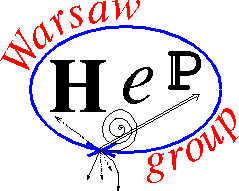SEMINARIUM FIZYKI WIELKICH ENERGII
Dnia 10 czerwca (piątek) o godzinie 10:15, w sali B2.38 odbędzie się
seminarium, na którym zostanie wygłoszony referat pt.:
„LHCb reborn: the start of a new era”
Referuje: Prof. Chris Parkes (University of Manchester (GB))
Abstract:
The Large Hadron Collider-beauty (LHCb) experiment completed its initial operating period (2010-2018) and has published over 600 scientific papers. Recent highlights of the physics output will be reviewed. The next era is now starting for LHCb, with the Upgrade I experiment having been installed. This is a major upgrade which will allow a significant increase of instantaneous luminosity and improve efficiencies and flexibility through the introduction of a fully software based trigger at 40MHz. Beyond this the collaboration is planning the Upgrade II for the 2030s, an ambitious flavour physics experiment at the HL- LHC, and a larger scale project than previously undertaken by LHCb. This will use a range of novel technological developments with many opportunities for the involvement of new collaborators in the research, design and construction activities
Serdecznie zapraszamy
dr hab. Katarzyna Grzelak
prof. dr hab. Jan Królikowski
prof. dr hab. Aleksander Filip Żarnecki

